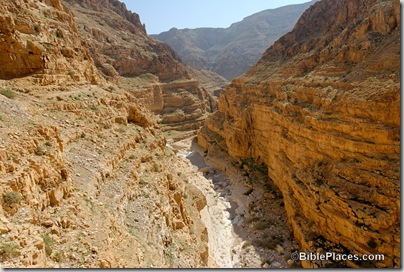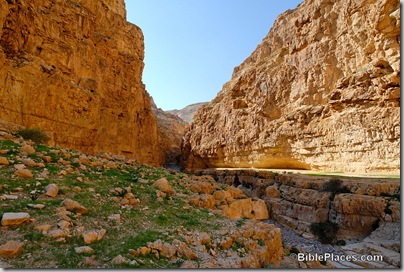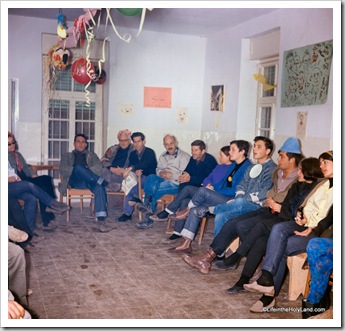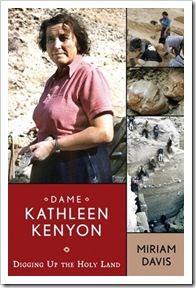Having been the victim of unwelcome, sometimes lengthy, and usually inflammatory comments on posts on this blog related to the Dead Sea Scrolls, I’m happy to see that New York police have arrested a man for allegedly creating many false identities, impersonating scholars, and slandering Dr. Lawrence Schiffman. The guilty party, whether he is the accused or someone else, had a single agenda: to promote the widely panned theories of Dr. Norman Golb. I have long been curious what sort of person would be so committed to such an endeavor as to spend countless hours to promote this view in places that have little real significance (this and other blogs, Wikipedia). The answer, if NY prosecutors are correct, makes some sense: the perpetrator was Golb’s son. That son, however, was not 14 years old, but 49. One scholar who has wrangled extensively with the multiple-aliased offender is Bob Cargill. A scholar at UCLA, Cargill has posted an extraordinary catalog of the campaign of this individual (be he the accused or someone else). A few hours after Cargill posted his catalog, NY police announced the arrest. From the NY Times:
For decades, the origin of the Dead Sea Scrolls has been intensely debated.
The prevailing theory is that these ancient documents, which include texts from the Hebrew Bible, were written over the three centuries before 100 A.D. by a Jewish sect known as the Essenes, who were based in Qumran, a settlement at the northwest shore of the Dead Sea near the caves where the scrolls were found between 1947 and 1956.
An alternative theory, passionately proffered by a University of Chicago professor, is that the scrolls’ authors were not Essenes, and that the scrolls themselves were kept in various libraries in Jerusalem until they were hidden in the caves around Qumran for safekeeping during the Roman war of A.D. 67 to 73. Qumran, he has said, was not an Essene monastery but a fortress, one of several armed defensive bastions around Jerusalem.
The professor, Norman Golb, has stood behind his theory despite significant criticism. His son, Raphael Haim Golb, has been one of his greatest allies.
But prosecutors said on Thursday that Raphael Golb took defending his father’s theory too far. Mr. Golb is accused of using stolen identities of various people, including a New York University professor who disagreed with his father, to elevate his father’s theory and besmirch its critics, Robert M. Morgenthau, the Manhattan district attorney, said at a news conference.
Mr. Golb, 49, was arrested Thursday morning and charged in Manhattan Criminal Court with identity theft, criminal impersonation and aggravated harassment. He faces up to four years in prison if convicted.
Prosecutors said Mr. Golb opened an e-mail account in the name of Lawrence H. Schiffman, the New York University professor who disagreed with Mr. Golb’s father. He sent messages in Professor Schiffman’s name to various people at N.Y.U. and to others involved in the Dead Sea Scrolls debate, fabricating an admission by Professor Schiffman that he had plagiarized some of Professor Golb’s work, Mr. Morgenthau said. Raphael Golb also set up blogs under various names that accused Dr. Schiffman of plagiarism, Mr. Morgenthau said.
Unfortunately dad’s response is not altogether encouraging.
Reached at his office in Chicago on Thursday afternoon, Professor Golb said he was shocked at the allegations leveled against his son, who is a real estate lawyer and has a Ph.D in comparative literature from Harvard.
“My son is an honorable person,” Professor Golb said. “He could not have done such a thing.”
Professor Golb said that opposing scholars had tried to quash his views over the years through tactics like barring him from Dead Sea Scrolls exhibitions. He said he saw the criminal charges as another attack on his work.
“Don’t you see how there was kind of a setup?” he said. “This was to hit me harder.”
I’m not sure that this is the best time for Professor Golb to be complaining of the same thing that led the impersonator to carry out his campaign.
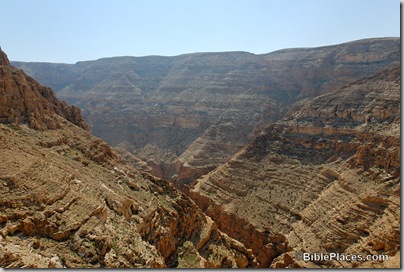
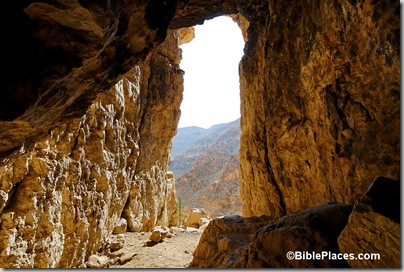 Wadi Murabaat = Nahal Darga, Cave where Bar Kochba scrolls found
Wadi Murabaat = Nahal Darga, Cave where Bar Kochba scrolls found